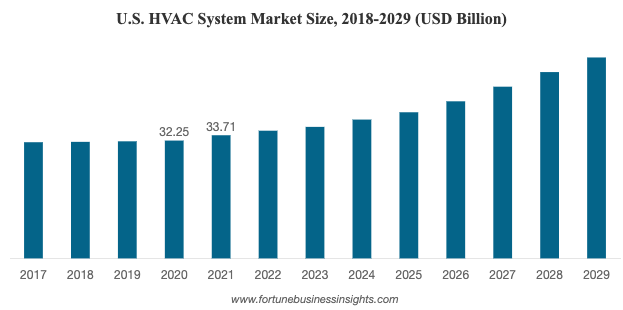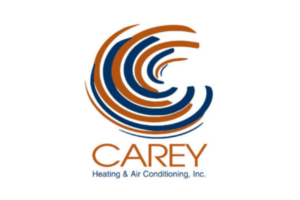Effective HVAC marketing is critical when growing your contracting business. The North American HVAC market was valued at $41.7 billion in 2021. By 2029, the market for HVAC services is projected to be worth more than $62 billion. As a result, the HVAC business is becoming more competitive. To keep pace with your competitors, you want to make sure you give focus to your HVAC marketing. How you choose to market your HVAC company can make you more competitive now and have positive lasting results.
Here are proven HVAC marketing strategies to attract customers for your HVAC business and keep those customers happy.
Which Low Cost HVAC Marketing Strategies Can Grow Leads and Revenue Right Away?
The biggest marketing effort you can make for your business is to create a culture where listening to the customer comes first. Your work takes you into people’s homes and businesses, and they want to work with companies they find trustworthy. That’s why it’s critical to hire the best technicians you can find (link to pillar) and train your staff to put their best efforts forward.
Here are 3 HVAC marketing strategies you can start using today.
1. Make sure your HVAC business website includes the following details.
- Tell your customers about your experience, ability, and special skill set.
- Define your service area and the types of customers your typically serve.
- Make it easy to contact you. Your telephone number should be clearly visible on every page of your website.
2. Create policies and procedures that put your customers first.
- Set response times for your staff and make sure you respond faster than your competition.
- Show your customers you care about their input. For example, if you’re planning a spring sale, you can poll your customers to see if they would prefer a discount on installation or deals on repairs.
- Focus on customer retention because it’s more expensive to earn new customers than to keep the ones you have. You can use HVAC Software to track warranties on equipment or manage maintenance contracts.
3. Build trust with networks in your community. Become better known within your service area by sponsoring a local sports team or donating HVAC services to a charitable auction. Join trade organizations for HVAC professionals like:
- American Society of Heating Refrigeration and Air Conditioning Engineers (ASHRAE)
- Refrigeration Service Engineers Society (RSES)
- Consortium for Energy Efficiency (CEE)
- Radiant Professionals Alliance (RPA)
- International Institute of Refrigeration (IIR)
- Air Conditioning Contractors of America (ACCA)
Trade organizations provide access to information like market analyses, professional development, and resources that will help you manage your business performance and cut costs.
Digital Marketing for HVAC Businesses

- An effective digital marketing strategy is critical for attracting new HVAC customers. Most of your customers will find you via a web search, so it’s important to have a great website. Here are the essential features your website must have.
- Make sure your website is up to date and displays well on mobile as well as on a desktop computer. It should be easy to find your contact information and details about your service area.
- Give your customers a reason to choose you. This is your promise you make to your customers. Highlight the fact that you have the most experienced technicians, guaranteed response or repair times, or a unique service that your customers won’t find elsewhere.
- If possible, include customer reviews or testimonials to prove you’re the company your HVAC advertising says you are.
- Don’t forget to include an About Us section that shows your values. It helps your customers see you as friendly and trustworthy.
- Offer multiple ways to get in touch. In addition to your phone number, you may want to invest in a chat bot or create a form for customers to fill out.
- Frequently Asked Questions. An FAQ page can help your customers understand what types of service you provide and the equipment that your technicians are qualified to service. This is also the page where you can offer guidance for potential customers about how frequently they should expect to service or upgrade their HVAC equipment, details about maintenance contracts and more.
7 HVAC Digital Marketing Strategies that Work
- Once you have launched your website, you want to make sure customers are able to find you. Here are 7 HVAC digital marketing tools that can help boost your chances of turning up in search results.
- Use SEO (Search Engine Optimization). SEO is the method of improving your website so that it’s more visible when potential customers search for your services in a search engine like Google or Bing. If your business is more visible, then you’re more likely to catch the eye of your potential customers. You may want to hire a professional consultant to improve your SEO.
- Consider pay per click advertising, which are the ads you see at the top of the page of your search engine results. On the positive side, paid digital ads can give you quality leads and a good return on your investment. However, pay per click requires a spending budget and expertise to help you create top quality ads for search engines like Google and Bing as well as on social media platforms like Facebook, Twitter, and LinkedIn.
- Social media can also be helpful for your HVAC advertising. You can create posts that advertise your services and announce promotions. Make sure the content you post is useful so your customers want to follow your social media accounts. For example, you could post winterizing ideas, or tell your customers when to change filters, provide tips to keep their systems up to date, as well as company deals and specials.
- Use Geofencing, which allows you to target specific HVAC service areas, including your competitors’ locations, or areas where you have lots of return customers, or areas that are similar to where you already have customers. The most effective Geofencing advertising uses effective offers. For example: Save $50 on a new air conditioning unit when you come to the shop today.
- Focus on local service. Make sure your website is ranked high in business listings and local directories when your customers search for HVAC service or repair in their area. Here’s a helpful video that shows you how.
- Ask your customers to write online reviews. Online recommendations carry a lot of weight for customers who are deciding which HVAC service company to call. Ask your current (happy customers) to provide a review on Google and social media platforms.
Try Email Marketing Campaigns for your HVAC Company

Email advertising can be a very effective tool to win more customers because it’s possible to target the types of customers you serve within a specific service area or even to target your competition’s customers. Show your customers and potential customers why you are in the HVAC business and how much you value their loyalty. Studies show email marketing has a very good ROI of $44 for every dollar you invest.
How can you make email work for you? Ask your customers to sign up at your website and receive news about deals, company updates, equipment tips, and more! Don’t forget to optimize your email for mobile users, including both phones and tablets. Once you have a subscription list, make sure you deliver great content on a regular basis. Consistent communication is the way to make sure your customers feel like they are taken seriously .
Track and Manage Your HVAC Marketing with HVAC Software
Using all in one HVAC software can help you manage your HVAC marketing so you can grow your customer list and your revenue. Great HVAC software helps you keep track of your calls and your customers. Look for HVAC software that helps you create targeted marketing campaigns that can filter by area. You can also use your software to remind your customers when it’s time to renew your maintenance contracts. With software that’s designed for the service industry like Shafers, you’ll be able to beat your competition, increase sales, and encourage customer renewals.
Choose all in one HVAC business software so that you can work more efficiently with one source of information. You’ll save time and be able to standardize processes and handle your data more productively.




